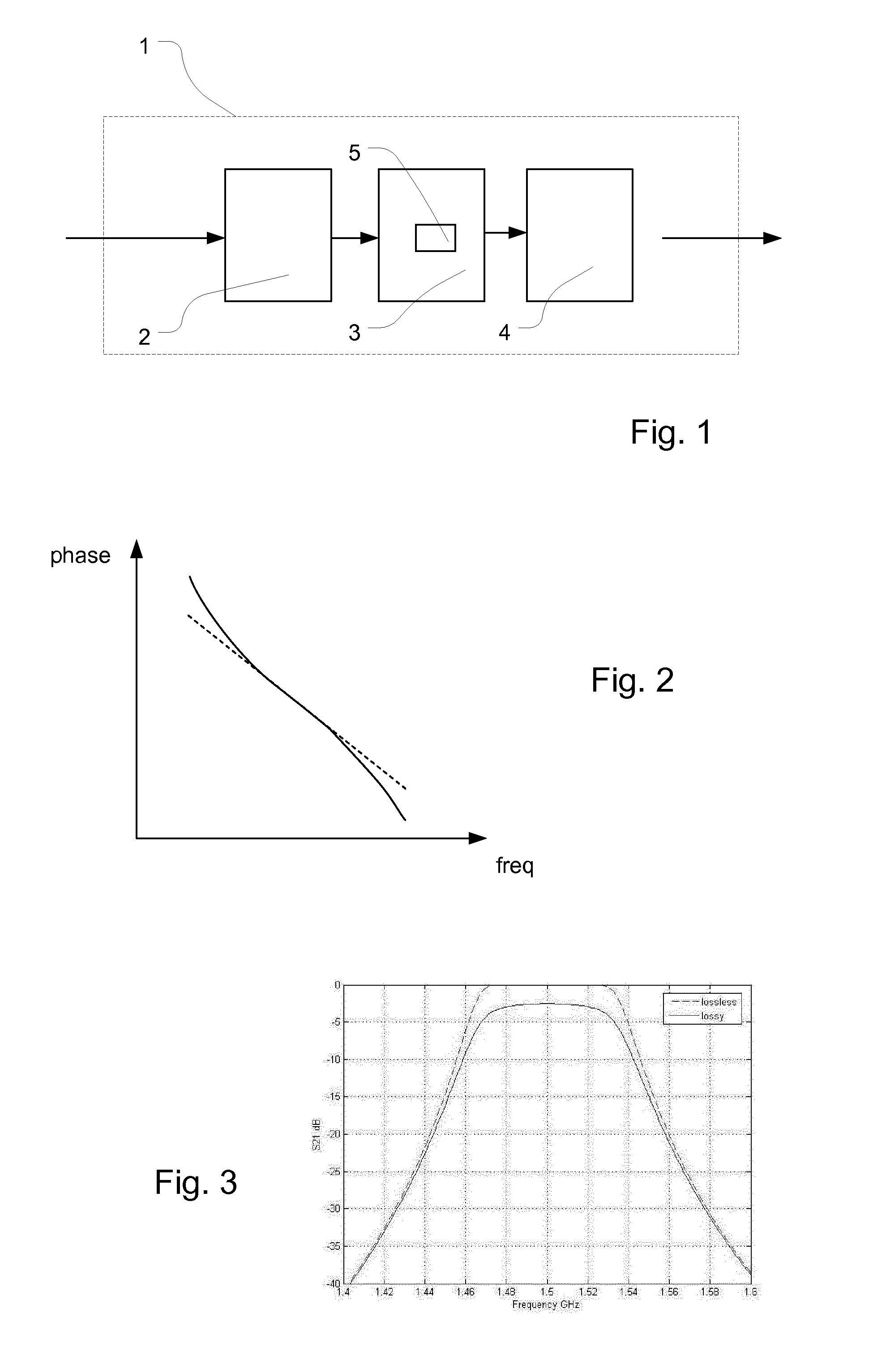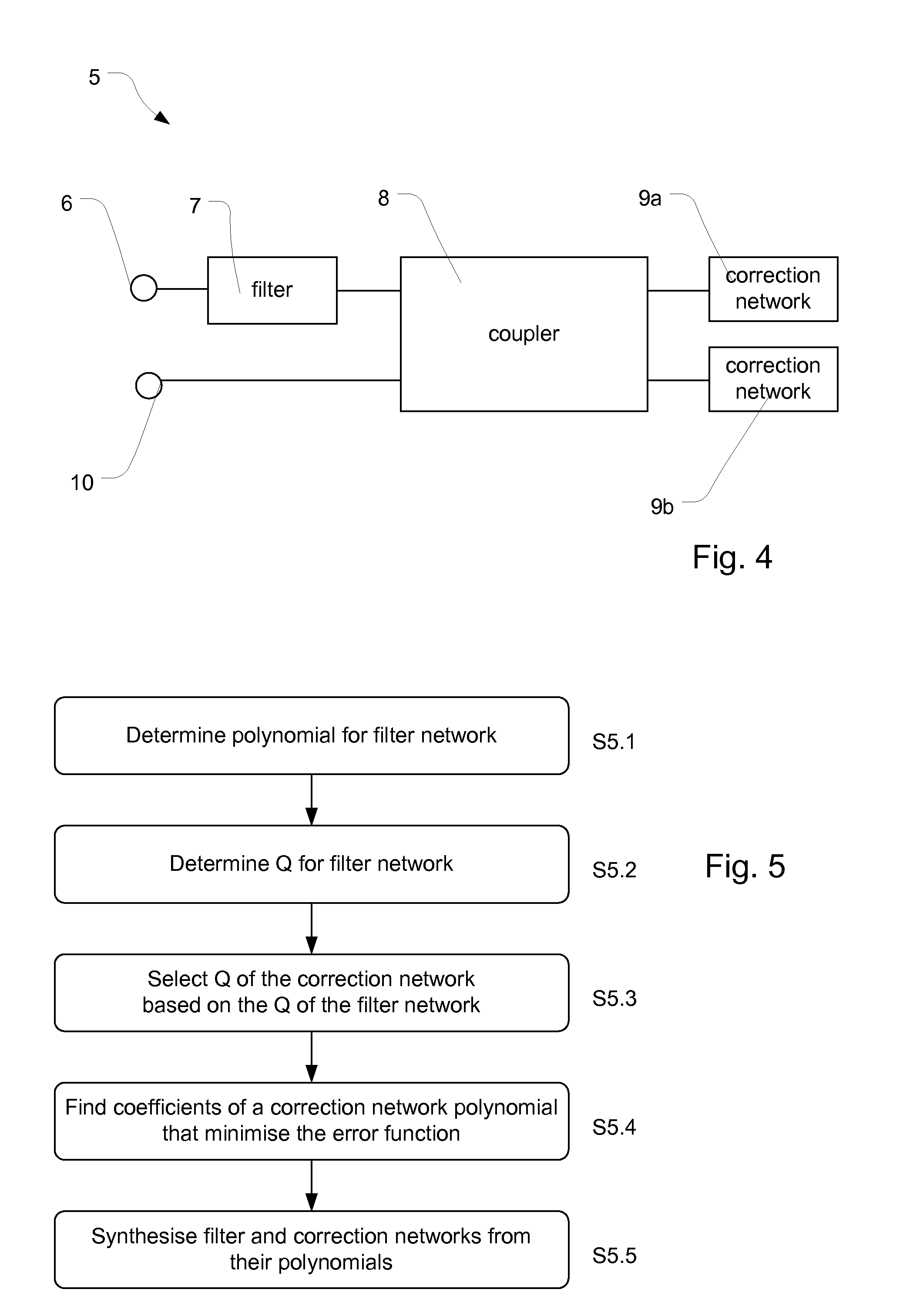Filter network arrangement
a filter network and filter technology, applied in the field of signal filtering, can solve the problems of signal degradation, large filter size, increased complexity and the order of filtering, etc., and achieve the effect of flattening group delay, flattening group delay, and minimising the variation in gain of filter network arrangemen
- Summary
- Abstract
- Description
- Claims
- Application Information
AI Technical Summary
Benefits of technology
Problems solved by technology
Method used
Image
Examples
Embodiment Construction
[0037]With reference to FIG. 1, a high-level diagram of a communication system 1 is shown comprising receiver 2 for receiving signals, a signal processing arrangement 3 for processing signals and a transmitter 4 for transmitting signals. The system may be a satellite communication system. The processing arrangement 3 may comprise one or more filter network arrangements 5. The filter network arrangement may, for example, comprise a bandpass filter network and may, for example, be used in a demultiplexer for demultiplexing received signals into a number of frequency channels. Alternatively, the filter network arrangements may be used in an up- or down-converter. It should be realised that a filter network arrangement could alternatively be used for any other suitable purpose.
[0038]The filter network arrangement is configured to let through signals of a specific frequency range and stop signals with frequencies outside the frequency range. The filter network arrangement will have some ...
PUM
 Login to View More
Login to View More Abstract
Description
Claims
Application Information
 Login to View More
Login to View More - R&D
- Intellectual Property
- Life Sciences
- Materials
- Tech Scout
- Unparalleled Data Quality
- Higher Quality Content
- 60% Fewer Hallucinations
Browse by: Latest US Patents, China's latest patents, Technical Efficacy Thesaurus, Application Domain, Technology Topic, Popular Technical Reports.
© 2025 PatSnap. All rights reserved.Legal|Privacy policy|Modern Slavery Act Transparency Statement|Sitemap|About US| Contact US: help@patsnap.com



